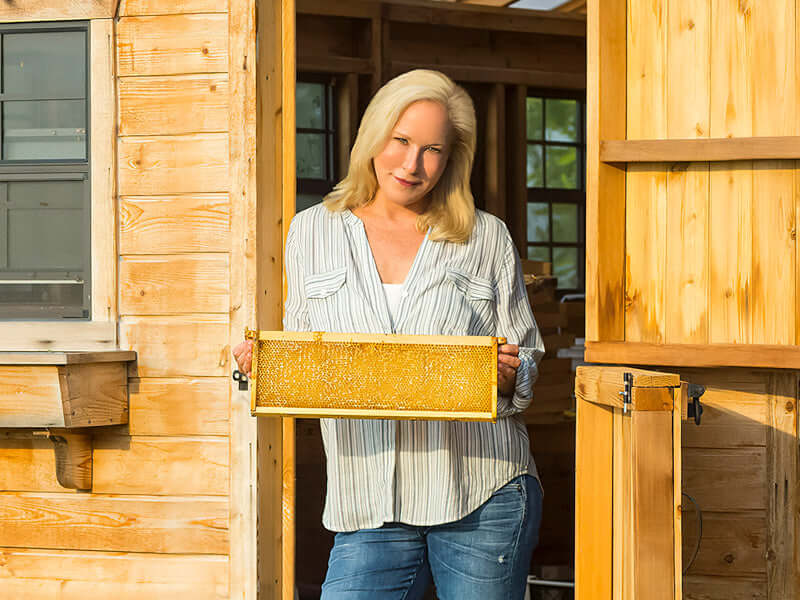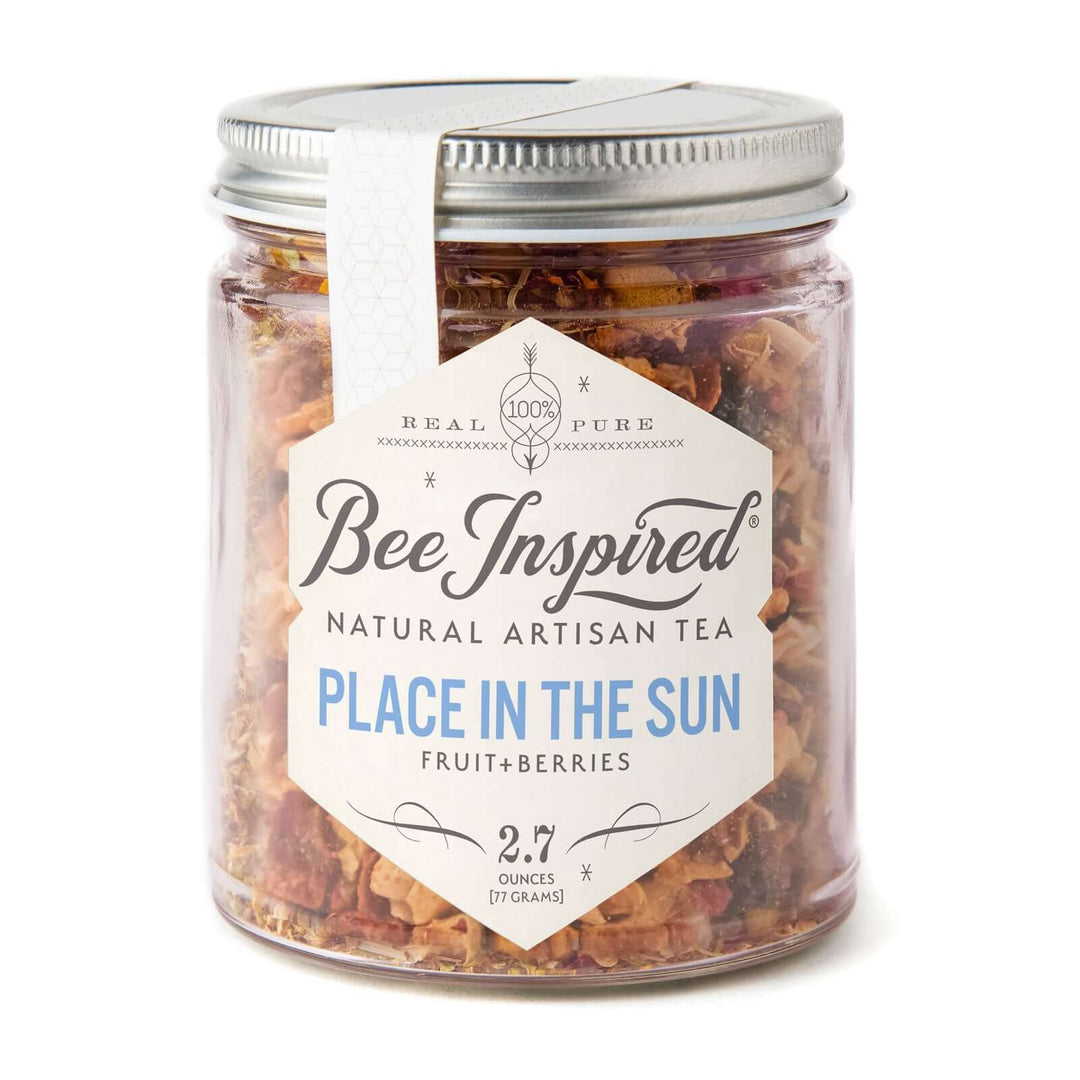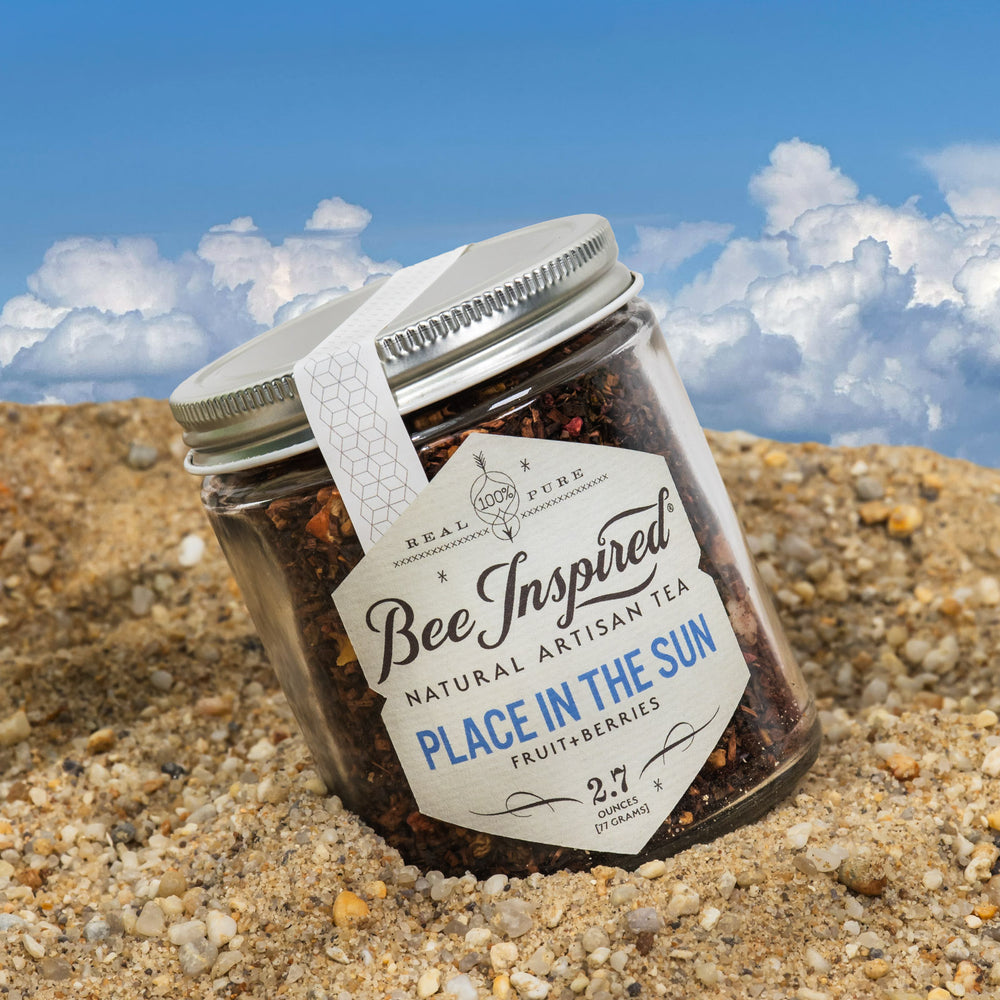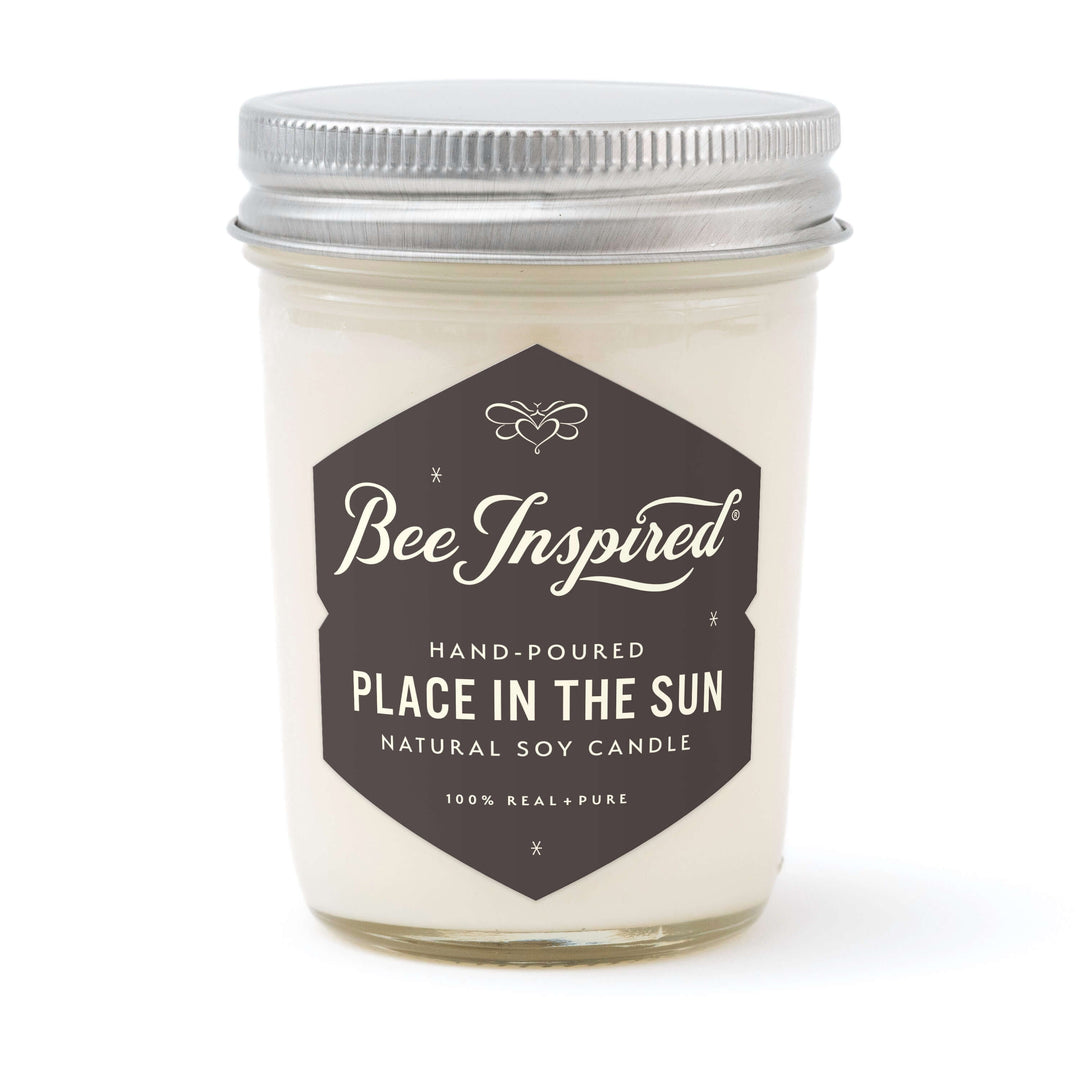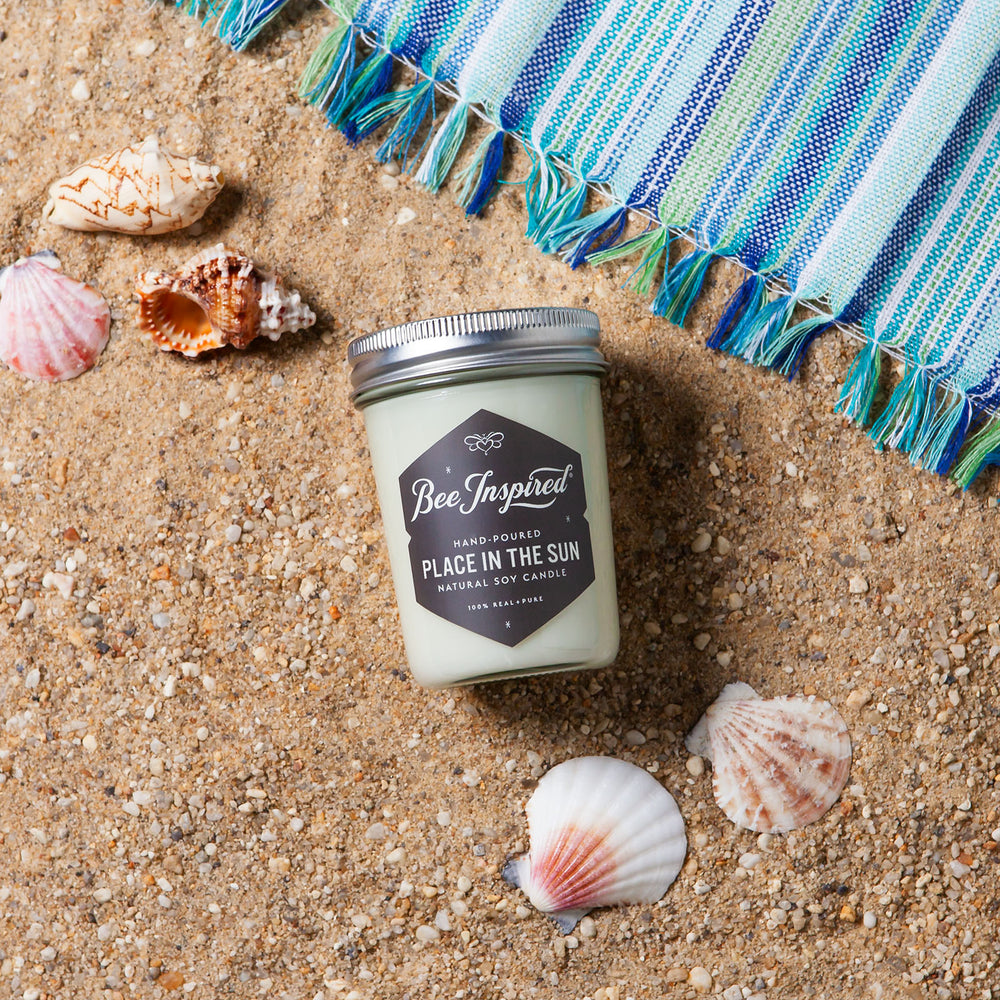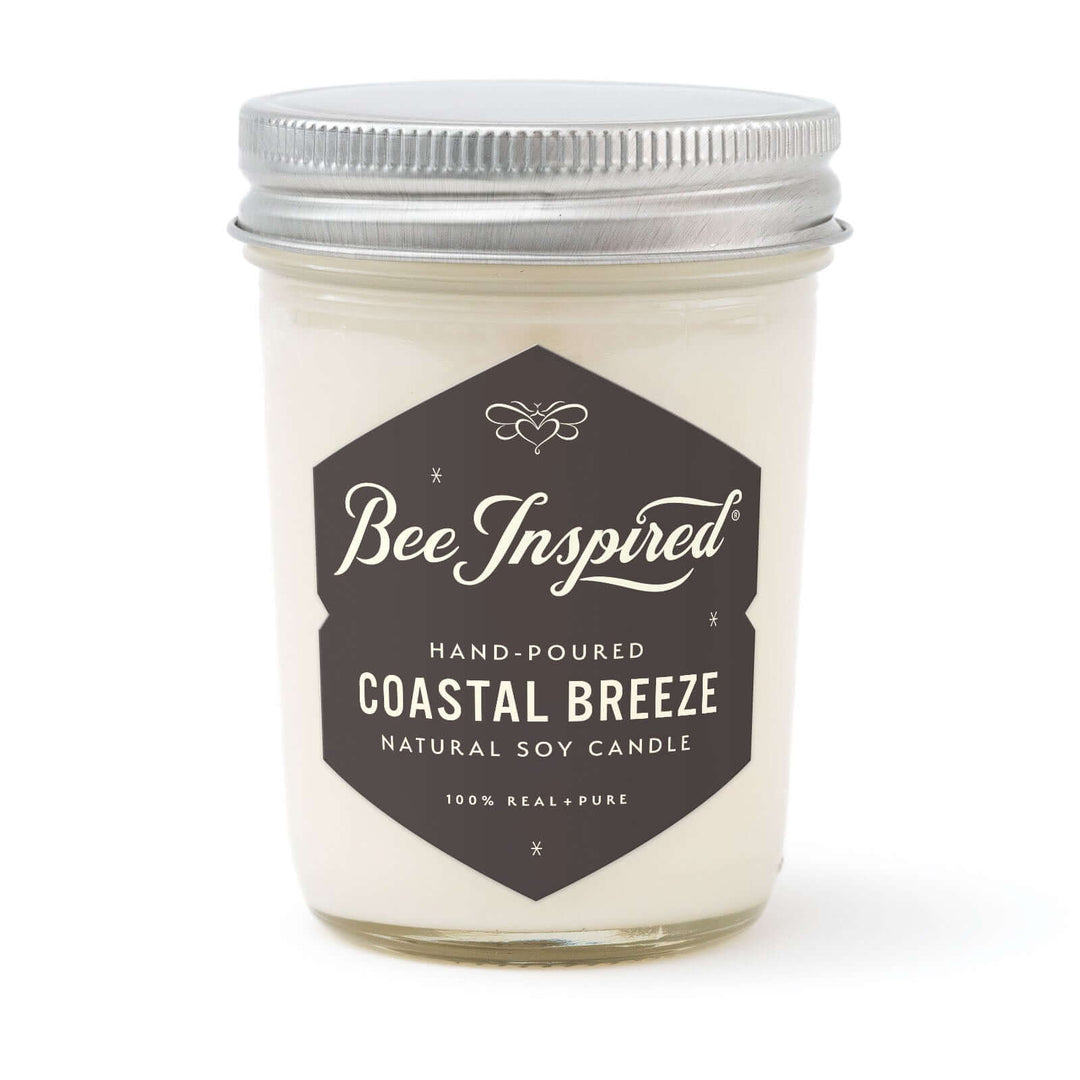Honey is a delightful and sweet substance meticulously crafted by bees from the nectar of flowers. This remarkable natural product results from a complex process involving nectar collection, enzymatic transformations, and water evaporation, creating a stable and nutrient-rich food source. The story of honey showcases nature's incredible ability to turn simple flower nectar into a treasured pantry staple that has captivated humans for thousands of years.
All of our honey is completely raw and natural!
What Makes Honey Truly Remarkable
Ever wondered what makes honey so special? Understanding what honey actually is reveals why this natural substance has captivated humans for thousands of years:
- Amazing Production Process: Honey comes from bees' incredible ability to transform flower nectar through enzymes and careful water evaporation—it's like nature's own chemistry lab!
- Rich, Complex Composition: Packed with natural sugars, amino acids, trace vitamins, minerals, and plant compounds from various flowers
- Worldwide Wonder: Different regions produce unique honey varieties with distinct flavors and characteristics
- Cultural Treasure: Honey has deep religious and cultural significance across virtually every society throughout history

Raw Honeycomb is the most pure form of honey you can eat
The Origin and Production of Honey
How Honey Begins: The Amazing Journey from Flower to Hive
The incredible story of honey starts when worker bees venture out to collect nectar from flowers. But here's where it gets really interesting—this isn't just simple collection. What happens next is one of nature's most fascinating transformation processes.
Here's How Bees Actually Make Honey:
- The Collection Mission: Worker bees use their long tongues to sip nectar from flowers, storing it in a special "honey stomach" (separate from their regular stomach!)
- The First Transformation: Special enzymes in this honey stomach immediately start breaking down complex flower sugars into simpler ones
- Back at the Hive: When forager bees return home, they pass their nectar to house bees through a process that might sound gross but is actually incredible—regurgitation and re-swallowing that continues the chemical transformation
- Into the Comb: House bees deposit this processed nectar into those perfect hexagonal honeycomb cells
- The Drying Process: Here's the really cool part—bees literally fan the honeycomb with their wings to evaporate excess water, concentrating the honey down to about 18% moisture content
- The Final Seal: Once it's perfect, bees cap each cell with a thin layer of wax, creating natural storage that can last for years
This whole process, carried out by thousands of worker bees, turns simple flower nectar into the complex, sweet honey we love. It's like having a natural food processing plant right in the hive!

Did you know honeycomb is made of beeswax?
Natural Engineering: Honeycomb Storage
Honey is stored meticulously in the hexagon-shaped cells of the honeycomb, which represents a marvel of natural engineering. This geometric structure provides:
- Efficient Storage: Maximum storage capacity with minimal material use
- Structural Integrity: Strong, stable construction for colony needs
- Easy Access: Convenient retrieval system for bee colony consumption
- Temperature Control: Optimal environment for honey preservation
Types of Honey-Producing Insects
Beyond the Western Honeybee
While the western honeybee (Apis mellifera) is the most well-known honey producer, generating hundreds of pounds annually, several other insects create honey:
Other Honey Producers:
- Bumblebees: Produce smaller quantities primarily for their queen and smaller colonies
- Stingless Bees: Found in warm regions, produce "sugarbag" honey with tangier flavor and runnier texture due to higher water content
- Mexican Honey Wasps: Some wasp species produce and store honey in paper-like hives
- Honeypot Ants: Store honey in specialized abdomens, swelling significantly to serve as living storage vessels
Each of these insects contributes to the diverse world of honey production, showcasing nature's versatility in creating sweet substances from floral resources.

Our Original Honey Body Scrub consists of one ingredient: crystallized honey! It is great for exfoliating and moisturizing your skin!
What Is Honey Composed Of? Natural Ingredients Breakdown
Primary Nutritional Components
Understanding what honey is made of reveals its complex nutritional profile:
Sugar Composition (About 80% of total content):
- Fructose: 38-40% - the sweetest natural sugar that makes honey taste so good
- Glucose: 30-35% - provides quick energy your body can use right away
- Other Natural Sugars: 5-10% - including maltose and sucrose from the original flower nectar
- Water Content: 17-20% - natural moisture that varies depending on how well the bees concentrated their honey
Additional Natural Components:
- Eighteen free amino acids (with proline being the most abundant)
- Trace B vitamins naturally present from floral sources
- Vitamin C in small amounts
- Minerals including calcium, iron, potassium, and magnesium
- Natural enzymes from bee processing
- Pollen particles from original flower sources

The natural composition of honey makes it popular in skincare applications!
Unique Natural Compounds
Antioxidant Content:
Honey contains various antioxidant compounds, primarily flavonoids like pinocembrin, which is unique to honey. These naturally occurring compounds contribute to honey's stability and distinctive characteristics.
Natural Acids:
Honey contains organic acids like gluconic acid, formed during glucose breakdown, which contributes to honey's slightly acidic pH (around 3.2-4.5) and natural preservation properties.
Enzymatic Activity:
Natural enzymes present in honey include:
- Glucose oxidase: Converts glucose during honey processing
- Invertase: Breaks down complex sugars into simpler forms
- Diastase: Involved in carbohydrate processing
- Catalase: Helps break down compounds during storage
The Detailed Honey Production Process
Step-by-Step: How Bees Make Honey
Phase 1: Field Collection
Worker bees venture from the hive to collect nectar from available flowers. During peak season, a single bee may visit hundreds of flowers per foraging trip, collecting nectar in their specialized honey stomach.
Phase 2: Hive Processing
Upon returning to the hive, forager bees transfer nectar to house bees through regurgitation. This transfer allows additional enzymatic processing that breaks down complex sugars into simpler, more stable forms.
Phase 3: Honeycomb Storage
House bees deposit the processed nectar into hexagonal wax cells within the honeycomb structure. Multiple bees may continue to process the same nectar, adding enzymes and reducing water content.
Phase 4: Moisture Reduction
Bees fan the honeycomb with their wings, creating airflow that evaporates excess water. This process continues until moisture content reaches approximately 18%, preventing fermentation and ensuring long-term stability.
Phase 5: Capping and Storage
Once properly concentrated, bees seal each cell with a thin layer of beeswax, creating an airtight storage system that preserves honey until needed by the colony.

Do you know what festooning is?
Nutritional Profile: What Makes Honey Special
Caloric and Carbohydrate Content
Basic Nutritional Facts (per tablespoon):
- Calories: 60 calories per tablespoon
- Carbohydrates: 17 grams total carbohydrates
- Sugars: Natural fructose and glucose composition
- Fat: Zero fat content
- Protein: Minimal protein content with trace amino acids
Comparative Nutritional Value
Honey offers more complex nutrition compared to refined sugars:
- Trace Nutrients: Contains vitamins and minerals absent in processed sugars
- Natural Origin: Unrefined source with naturally occurring compounds
- Flavor Complexity: Diverse taste profiles depending on floral sources
- Traditional Uses: Historically valued across cultures for culinary applications

Honey Sticks provide convenient natural energy from concentrated floral sugars
Natural Properties and Characteristics
Physical Properties of Honey
Viscosity and Flow:
Freshly extracted honey exhibits viscous liquid properties that vary based on:
- Temperature: Warmer honey flows more easily
- Water Content: Lower moisture creates thicker consistency
- Floral Source: Different flowers produce varying viscosity levels
- Age: Honey may thicken over time through natural processes
Color and Flavor Variations:
Honey color ranges from clear and colorless to dark amber, with flavor profiles including:
- Light Honeys: Mild, delicate flavors from sources like clover or acacia
- Medium Honeys: Balanced flavors from mixed wildflower sources
- Dark Honeys: Robust, complex flavors from sources like buckwheat or forest flowers
Why Honey Crystallizes (And Why That's Actually Good!)
Have you ever opened a jar of honey to find it's turned solid and grainy? Don't worry—your honey hasn't gone bad! Crystallization is actually a sign that you've got pure, real honey.
Here's What's Really Happening:
- It's Natural: All pure honey will eventually crystallize because it's a supersaturated sugar solution
- Glucose is the Culprit: The glucose in honey naturally wants to form crystals over time
- Temperature Matters: Cooler storage (like your pantry) actually encourages crystallization
- Still Perfect: Crystallized honey has the exact same nutritional properties and flavor—it's just in a different form
Pro Tip: You can easily turn crystallized honey back to liquid by gently warming the jar in a bowl of warm water. Just don't microwave it or use boiling water, as high heat can damage those beneficial enzymes!
The fact that honey crystallizes is actually proof that it's pure and unprocessed. Heavily processed honey often won't crystallize because the natural particles that help crystals form have been filtered out.
Traditional and Modern Uses of Honey
Culinary Applications Throughout History
Traditional Cooking Uses:
Honey's versatility in culinary applications spans cultures and centuries:
- Natural Sweetening: Traditional alternative to refined sugars in beverages and foods
- Baking Applications: Adds moisture and complex flavors to baked goods
- Preservation: Historical use in food preservation due to natural properties
- Fermentation: Traditional mead production utilizing honey's fermentable sugars
Modern Culinary Innovation:
Contemporary cooking continues utilizing honey's unique properties:
- Flavor Enhancement: Complements both sweet and savory dishes
- Texture Modification: Affects moisture retention in baking
- Marinades and Glazes: Creates caramelization and depth of flavor
- Beverage Sweetening: Natural honey syrups for drinks

These gluten-free muffins with Cranberry Honey demonstrate honey's baking versatility!
Traditional Cultural Applications
For deeper understanding of honey's traditional significance, explore how different cultures have used honey in ceremonial and topical applications throughout history.
Historical Documentation:
- Ancient Civilizations: Recorded honey use in various cultural practices
- Traditional Medicine: Historical texts document honey's role in traditional remedies
- Cultural Ceremonies: Religious and social customs incorporating honey across cultures
- Economic Value: Historical use as currency and trade commodity
Safety Considerations and Precautions
Important Safety Information (This Is Really Important!)
Never Give Honey to Babies Under 1 Year Old: This is serious—honey can contain spores of bacteria that cause infant botulism, which can be life-threatening for babies. Their immune systems just aren't developed enough to handle it yet. Once they're over a year old, they're good to go! Learn more about honey and pregnancy safety.
If You Take Blood Thinners: Chat with your doctor before adding honey to your regular diet. Honey might interact with certain medications, so it's always better to check first.
Know Your Source: Some honeys (particularly those from rhododendrons or certain mountain plants) can contain natural compounds that might not agree with everyone. This is pretty rare, but it's why buying from reputable sources matters.
The good news? For most people, pure honey from trusted sources is perfectly safe and delicious!

Our Mama to Bee Set includes pregnancy-safe products for expecting mothers
Honey's Role in Beekeeping and Colony Health
Essential Food Source for Bees
Understanding what honey means to bees reveals its critical importance:
Colony Survival:
- Winter Storage: Bees produce honey to sustain colonies during winter months when flowers aren't available
- Energy Source: Provides concentrated energy for colony activities and maintenance
- Brood Feeding: Supports development of young bees and colony growth
- Emergency Reserves: Serves as backup nutrition during adverse weather or resource scarcity
Seasonal Considerations:
Honey production varies with floral availability and seasonal changes. Beekeepers must carefully balance harvest with colony needs, ensuring adequate reserves for bee survival.
Colony Dynamics:
Bees adjust foraging behavior based on colony nutritional needs, selecting floral sources that provide optimal nutrition. This dynamic relationship highlights the sophisticated social organization within honey bee colonies.
Quality Assessment and Honey Purity
Identifying High-Quality Honey
Quality Indicators:
- Source Transparency: Knowledge of floral source and geographic origin
- Processing Methods: Minimal processing preserves natural enzymes and compounds
- Color and Consistency: Natural variations indicate authentic, unprocessed honey
- Crystallization Patterns: Natural crystallization suggests pure, unfiltered honey
Adulteration Concerns:
The global honey market faces challenges with honey adulteration using:
- Corn Syrup: Added to extend volume and reduce costs
- Rice Syrup: Mixed with honey to increase quantity
- Other Sweeteners: Various sugar additions that alter honey's natural composition
Modern Testing Methods:
- Laboratory Analysis: Advanced techniques verify honey authenticity
- Pollen Analysis: Microscopic examination confirms floral sources
- Chemical Testing: Identifies adulterants and processing effects
- NMR Spectroscopy: Modern technology detects honey purity

Our Coffee Honey is our first imported honey from Guatemala!
Global Honey Production and Varieties
Worldwide Honey Production
Leading Honey-Producing Countries:
- China: Approximately 461,900 tonnes annually (world's largest producer)
- Turkey: Significant production with diverse floral sources
- Iran: About 79,535 tonnes yearly from varied landscapes
- United States: Around 56,849 tonnes annually, with North Dakota leading state production
- Ukraine: Approximately 63,079 tonnes from rich agricultural regions
- India: About 74,204 tonnes yearly from diverse ecosystems
This global distribution demonstrates honey production's worldwide significance and the collaborative efforts of beekeepers internationally.
Honey Variety Diversity
Understanding honey varieties reveals the remarkable diversity available:
Floral Source Categories:
- Single-Source Honeys: Produced primarily from one flower type (clover, orange blossom, buckwheat)
- Wildflower Honeys: Created from multiple flower sources in natural environments
- Regional Specialties: Unique varieties specific to geographic areas and local flora
For comprehensive information about honey varieties, explore our guide to 300+ types of honey and their distinctive characteristics.

Experience different varietals with our Honey Tasting Tower
Cultural and Historical Significance
Honey Throughout Human History
Ancient Civilizations:
Honey's cultural importance spans thousands of years:
- Ancient Egypt: Used in burial rituals, symbolizing preservation and eternal life
- Greek Mythology: Regarded as 'nectar of the gods' with divine significance
- Biblical References: Frequently mentioned as symbol of abundance and divine provision
- Trade Commodity: Historically used as currency due to long-term stability
Religious and Cultural Context:
Honey appears in virtually every major world religion and cultural tradition. From Jewish New Year celebrations to Buddhist ceremonial offerings, honey maintains profound spiritual significance across cultures.

Honey plays a central role in Rosh Hashanah traditions, being a popular kosher gift
Modern Cultural Appreciation
Contemporary Significance:
- Artisanal Food Movement: Growing appreciation for local, traditional honey production
- Sustainable Agriculture: Recognition of honey's role in pollinator conservation
- Cultural Heritage: Preservation of traditional beekeeping knowledge and practices
- Educational Value: Teaching opportunities about ecology, agriculture, and natural processes
Understanding Honey: From Flower to Table
The Complete Honey Journey
Throughout this exploration of what honey is, we've discovered:
Scientific Understanding:
- Complex Production: Sophisticated natural processes create honey from simple flower nectar
- Nutritional Composition: Rich blend of natural sugars, enzymes, vitamins, and minerals
- Physical Properties: Unique characteristics including viscosity, crystallization, and preservation qualities
Cultural Appreciation:
- Historical Significance: Thousands of years of human relationship with honey and bees
- Global Importance: Worldwide production and cultural integration across societies
- Traditional Wisdom: Ancient knowledge about honey's properties and applications
Modern Applications:
- Culinary Versatility: Contemporary cooking applications honoring traditional uses
- Quality Awareness: Understanding authenticity and source transparency
- Sustainable Practices: Supporting ethical beekeeping and environmental conservation

Why Honey Is Nature's Sweet Masterpiece
So, what is honey? It's way more than just a sweetener! Honey represents one of nature's most incredible collaborations—between flowers, bees, and humans. From that first moment when a bee lands on a flower to the golden jar in your kitchen, honey tells a story of natural processes that are both scientifically fascinating and culturally meaningful.
Here's What Makes Honey So Special:
- It's Naturally Complex: Those simple flower nectars become incredibly sophisticated through the bees' natural processing
- It's Nutritionally Unique: Unlike processed sugars, honey comes packed with enzymes, amino acids, and trace nutrients
- It's Culturally Rich: For thousands of years, humans have treasured honey not just for taste, but for its deeper significance
- It Connects Us to Nature: Every jar represents the work of about 60,000 bees visiting 2 million flowers—how amazing is that?
When You Choose Quality Honey, You're Supporting:
- Happy, Healthy Bees: Ethical beekeeping practices that put bee welfare first
- Environmental Health: Diverse ecosystems and the pollinators that keep them thriving
- Traditional Craftsmanship: Beekeepers who've mastered their craft over generations
- Your Local Community: Small-scale producers who care about their land and their bees
Whether you're looking for natural sweeteners for your morning coffee, exploring traditional recipes, or simply wanting to appreciate one of nature's most amazing creations, understanding what honey really is makes every spoonful more meaningful.
Next time you drizzle honey on your toast or stir it into your tea, remember the incredible journey it took to get there. And maybe take a moment to appreciate the thousands of bees who made it all possible!
Discover the pure essence of what honey should be with our collection of Eastern Shore honey varieties. From traditional wildflower honey to unique seasonal varieties, each jar represents the authentic honey-making process described in this guide. Experience the difference that ethical beekeeping and minimal processing make in creating truly exceptional honey products.
Frequently Asked Questions
What is the main difference between raw honey and processed honey?
Raw honey retains natural enzymes, pollen, and nutrients because it hasn't been heated or extensively filtered, while processed honey undergoes heating and filtering that may reduce some beneficial compounds. Raw honey generally preserves more of the original characteristics created during the natural honey-making process.
Can honey be used in wound care?
Medical-grade honey products are utilized in clinical wound care settings. However, regular culinary honey is not intended for medical applications and should not be used on wounds without professional medical guidance.
Is it safe to give honey to infants?
No, honey should not be given to infants under one year old due to potential botulism risk, which poses serious concerns for developing immune systems.
How can I tell if honey has been adulterated?
Quality assessment involves checking source transparency, understanding processing methods, and recognizing natural characteristics like crystallization patterns. Professional testing methods include laboratory analysis and pollen examination for definitive authenticity verification.
What are honey's main nutritional components?
Honey primarily contains natural fructose (38-40%), glucose (30-35%), water (17-20%), and other natural sugars, along with trace amounts of enzymes, amino acids, vitamins, and minerals derived from floral sources.






